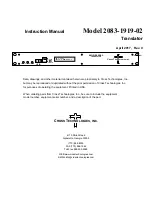
Using t
he Song Mem
ory
Using t
he Song Mem
ory
19
&GNGVKPI
C
5QPI
1. Repeatedly press
SONG MEMORY
until
FbWo
FbWo
FbWo
FbWo
appears.
2. Repeatedly press
+
or
–
to select the
song number.
3. Press
G
(
ENTER
).
Ied]:[b5
Ied]:[b5
Ied]:[b5
Ied]:[b5
appears
4. Press
YES
.
Ikh[5
Ikh[5
Ikh[5
Ikh[5
appears, prompting
you to confirm the deletion.
5. Press
YES
again.
&GNGVKPI
#NN
&CVC
KP
C
5RGEKHKE
6TCEM
1. Repeatedly press
SONG MEMORY
until
FbWo
FbWo
FbWo
FbWo
appears.
2. Repeatedly press + or – to select the
song number.
3. Press
G
(
ENTER
).
Ied]:[b5
Ied]:[b5
Ied]:[b5
Ied]:[b5
appears
4. Repeatedly press
I
or
J
(
CURSOR
) until
Jh$:[b5
Jh$:[b5
Jh$:[b5
Jh$:[b5
appears.
5. Press the appropriate
SONG MEMORY
TRACK
(
1
-
6
) to select the track(s) you
want to delete. You can specify more
than one track by pressing more than
one button.
±
6. Press
YES
.
Ikh[5
Ikh[5
Ikh[5
Ikh[5
appears, prompting
you to confirm the deletion.
7. Press
YES
again to delete the track(s).
4GYTKVKPI
5QPI
&CVC
2CPGN
4GEQTF
Each song in the keyboard’s memory has a
section in its header called the
panel record.
This section contains initial data for the
recording. You can rewrite this portion if
necessary.
The settings stored in panel records are:
• Rhythm
• Tempo
• Accomp Volume
• Reverb On/Off
• Reverb Type
• Chorus On/Off
• Chorus Type
• DSP Type
• Equalizer Type
The following mixer parameters are also
stored in the panel record:
• Tone
• Part On/Off
• Volume
• Pan
• Oct Shift
• Coarse Tune
• Fine Tune
• Reverb Send
• Chorus Send
1. Repeatedly press
SONG MEMORY
until
FbWo
FbWo
FbWo
FbWo
appears.
2. Repeatedly press + or – to select the
song number.
3. Make the changes in settings as
desired.
4. Press
G
(
ENTER
).
Ied]:[b5
Ied]:[b5
Ied]:[b5
Ied]:[b5
appears.
5. Repeatedly press
I
or
J
(
CURSOR
) until
Fd[bH[Y5
Fd[bH[Y5
Fd[bH[Y5
Fd[bH[Y5
appears.
6. Press
YES
to rewrite the header data.
7
5+0)
/+&+
Your keyboard includes a feature called
MIDI (Musical Instrument Digital Interface).
MIDI is the universal standard for sending
and receiving performance data between all
types of electronic musical instruments,
regardless of manufacturer. Using MIDI, you
can play music on your keyboard and
another instrument at the same time while
pressing the keys on only one, record your
music to a sequencer, acquire a wider
selection of preset tones from a sound
module, and much more.
Connecting your keyboard to another MIDI
device requires a MIDI cable (not supplied).
For detailed specifications of the MIDI
function, see the “MIDI Implementation
Chart” on Page 41. For more information
about MIDI parameters, visit
www.radioshack.com and download the
“MD-1121 MIDI Implementation.”
#
$176
/+&+
Every MIDI-equipped instrument has MIDI
OUT and IN terminals, and some also have
a MIDI THRU terminal. Each of these
terminals serves a different purpose.
MIDI OUT sends MIDI data to (“talks to”)
other MIDI instrument(s).
MIDI IN receives (“listens to”) MIDI data sent
by other MIDI instrument(s).
MIDI THRU lets you connect (“network”)
additional MIDI instruments, and sends
other MIDI devices a copy of all data it
receives through its MIDI IN terminal.
Your keyboard has
MIDI OUT
and
MIDI IN
terminals.
The cable that connects MIDI devices does
not actually carry sound between them, like
a speaker wire carries sound from a receiver
to a speaker. Instead, MIDI-equipped
devices communicate with each other using
digital codes (instructions). One MIDI device
sends digital instructions representing
exactly what is being played on it. The other
MIDI device receives and translates those
instructions, then produces (or records) the
sound exactly as it was played on the first
device.
±
016'
±
•
To deselect a track, simply press its button
again.
•
You cannot change the song number while
in track delete standby.
•
You cannot select a track that does not
contain recorded data.
•
Pressing SONG MEMORY while in track
delete standby mode returns to record
standby mode.
Summary of Contents for 42-4058
Page 23: ...23 Tone List 610 56 2 0 610 5 ...
Page 24: ...24 Tone List 2 0 610 5 106 07 ...
Page 25: ...25 Tone List 8 0 610 5 ...
Page 26: ...26 Tone List 8 0 610 5 106 07 ...
Page 27: ...27 Tone List 610 5 ...
Page 28: ...28 Tone List 610 5 106 07 ...
Page 29: ...29 Tone List 47 5170 5 75 4 610 5 ...
Page 30: ...30 Tone List 47 55 0 06 56 ...
Page 31: ...31 Tone List 0 4 14 46 ...
Page 32: ...Effect List 32 6 56 4 8 4 1475 52 ...
Page 33: ...33 Effect List 52 106 07 ...
Page 41: ...41 MIDI Implementation Chart 2 06 6 10 46 ...
Page 43: ...Notes Notes 43 016 5 ...
















































